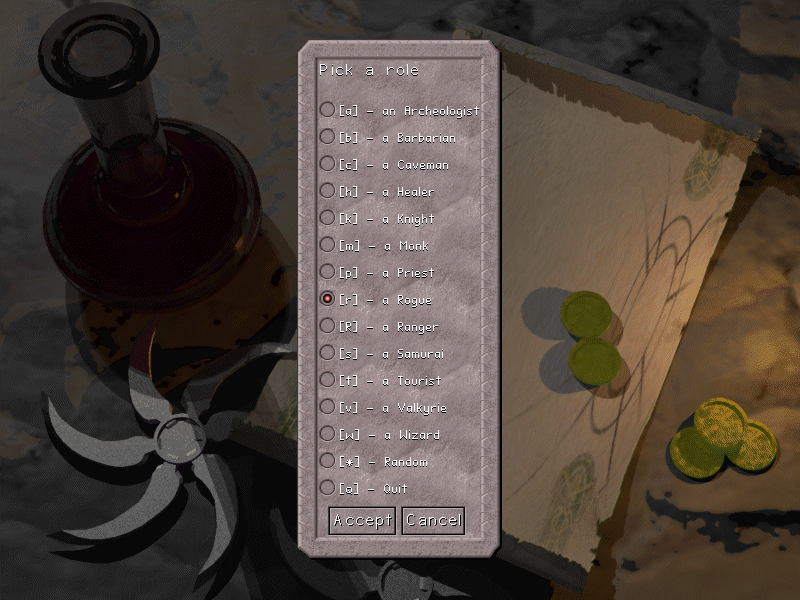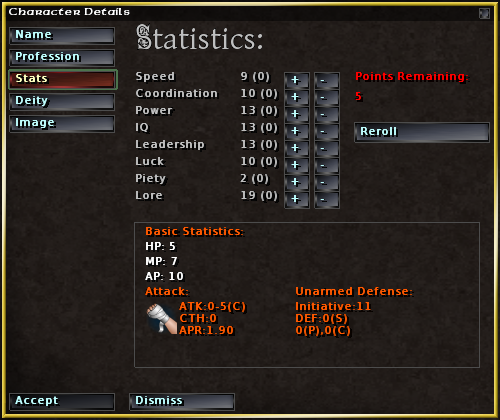|
Too Human
''Too Human'' is an action role-playing game developed by Silicon Knights and published by Xbox Game Studios, Microsoft Studios. It was released in August 2008 for the Xbox 360. The game's story is a science-fictional futuristic retelling of Norse mythology that portrays the Æsir, the Norse gods, as cybernetically enhanced humans, tasked with protecting mankind from the onslaught of Loki's army of machines. The player takes the role of the Norse god Baldr, Baldur, who is less cybernetic than the other gods thus being "too human". The game is notable for having remained in development hell for almost ten years. It was originally announced for release on the PlayStation (console), PlayStation in 1999, but this was abandoned and development switched to the GameCube in 2000 after Silicon Knights and Nintendo announced an exclusivity partnership. Development restarted again in 2005 when Microsoft bought the rights to the game and announced that it would be a Xbox 360 game. It was pl ... [...More Info...] [...Related Items...] OR: [Wikipedia] [Google] [Baidu] |
Silicon Knights
Silicon Knights was a Canadian video game developer. Founded in 1992 by Denis Dyack, the company was headquartered in St. Catharines, Ontario. They started developing for computers such as the Atari ST and IBM PC compatibles. After 1996, they moved to console titles. Dyack left Silicon Knights to form a new game studio, Precursor Games, after the loss of a court case against Epic Games over the game engine Unreal Engine 3. Epic Games won the case and a counter-suit for $4.45 million on grounds of copyright infringement, misappropriation of trade secrets, and breach of contract. Following the case, Silicon Knights filed for bankruptcy on May 16, 2014. Games Released Silicon Knights' first games were real-time strategy/action hybrids for computers. Silicon Knights' last PC game, '' Blood Omen: Legacy of Kain'' was published in 1996. Since that time, Silicon Knights moved from creating PC games to console titles. In 2000, Silicon Knights was signed by Nintendo to create games excl ... [...More Info...] [...Related Items...] OR: [Wikipedia] [Google] [Baidu] |
GameCube
The is a home video game console developed and released by Nintendo in Japan on September 14, 2001, in North America on November 18, 2001, and in PAL territories in 2002. It is the successor to the Nintendo 64 (1996), and predecessor of the Wii (2006). In the sixth generation of video game consoles, the GameCube competed with Sony's PlayStation 2 and Microsoft's Xbox. Flagship games include '' Super Smash Bros. Melee'', ''Luigi's Mansion'', ''Super Mario Sunshine'', ''Metroid Prime'', '' Mario Kart: Double Dash'', ''Pikmin'', ''Pikmin 2'', '' The Legend of Zelda: The Wind Waker'', ''Chibi-Robo!'', and ''Animal Crossing''. Development was enabled by the 1997 formation of computer graphics company ArtX, of former SGI employees who had created the Nintendo 64, and which was later acquired by ATI to produce the GameCube's GPU. In May 1999, Nintendo announced codename Dolphin, released in 2001 as the GameCube. It is Nintendo's first console to use optical discs instead of ROM cartrid ... [...More Info...] [...Related Items...] OR: [Wikipedia] [Google] [Baidu] |
Level (video Gaming)
In video games, a level (also referred to as a map, stage, or round in some older games) is any space available to the player during the course of completion of an objective. Video game levels generally have progressively-increasing difficulty to appeal to players with different skill levels. Each level may present new concepts and challenges to keep a player's interest high. In games with linear progression, levels are areas of a larger world, such as Green Hill Zone. Games may also feature interconnected levels, representing locations. Although the challenge in a game is often to defeat some sort of character, levels are sometimes designed with a movement challenge, such as a jumping puzzle, a form of obstacle course. Players must judge the distance between platforms or ledges and safely jump between them to reach the next area. These puzzles can slow the momentum down for players of fast action games; the first ''Half-Life'''s penultimate chapter, "Interloper", featured multip ... [...More Info...] [...Related Items...] OR: [Wikipedia] [Google] [Baidu] |
Runes
Runes are the letter (alphabet), letters in a set of related alphabets known as runic alphabets native to the Germanic peoples. Runes were used to write various Germanic languages (with some exceptions) before they adopted the Latin alphabet, and for specialised purposes thereafter. In addition to representing a sound value (a phoneme), runes can be used to represent the concepts after which they are named (ideographs). Scholars refer to instances of the latter as ('concept runes'). The Scandinavian variants are also known as ''futhark'' or ''fuþark'' (derived from their first six letters of the script: ''Feoh, F'', ''Ur (rune), U'', ''Thurisaz, Þ'', ''Ansuz (rune), A'', ''Raido, R'', and ''Kaunan, K''); the Anglo-Saxons, Anglo-Saxon variant is ''Anglo-Saxon runes, futhorc'' or ' (due to sound-changes undergone in Old English by the names of those six letters). Runology is the academic study of the runic alphabets, runic inscriptions, runestones, and their history. Runology f ... [...More Info...] [...Related Items...] OR: [Wikipedia] [Google] [Baidu] |
Character Class
In tabletop games and video games, a character class is a job or profession commonly used to differentiate the abilities of different game characters. In role-playing games (RPGs), character classes aggregate several abilities and aptitudes, and may also detail aspects of background and social standing, or impose behavior restrictions. Classes may be considered to represent archetypes, or specific careers. RPG systems that employ character classes often subdivide them into levels of accomplishment, to be attained by players during the course of the game. It is common for a character to remain in the same class for its lifetime; although some games allow characters to change class, or attain multiple classes. Some systems eschew the use of classes and levels entirely; others hybridize them with skill-based systems or emulate them with character templates. In shooter games and other cooperative video games, classes are generally distinct roles with specific purposes, weapons or ... [...More Info...] [...Related Items...] OR: [Wikipedia] [Google] [Baidu] |
Character Creation
Character creation (also character generation or character design) is the process of defining a game character or other character. Typically, a character's individual strengths and weaknesses are represented by a set of statistics. Games with a fictional setting may include traits such as race, class, or species. Games with a more contemporary or narrower setting may limit customization to physical and personality traits. This is usually used in Role-playing games. Role-playing games Character creation is typically the first step taken by the players (as opposed to the gamemaster) in preparation for a game. The result of character creation is a '' direct characterization'' that is recorded on a character sheet. In its most comprehensive form it includes not only a game-specific representation of the character's physical, mental, psychological and social properties in terms of statistics, but also often less formal descriptions of the character's physical appearance, personalit ... [...More Info...] [...Related Items...] OR: [Wikipedia] [Google] [Baidu] |
Combo (video Gaming)
In video games, a combo (short for combination) is a set of actions performed in sequence, usually with strict timing limitations, that yield a significant benefit or advantage. The term originates from fighting games where it is based upon the concept of a striking combination. It has been since applied more generally to a wide variety of genres, such as puzzle games, shoot 'em ups, and sports games. Combos are commonly used as an essential gameplay element, but can also serve as a high score or attack power modifier, or simply as a way to exhibit a flamboyant playing style. In fighting games, combo specifically indicates a timed sequence of moves which produce a cohesive series of hits, each of which leaves the opponent unable or almost unable to block or otherwise avoid the following hits in the sequence. History John Szczepaniak of ''Hardcore Gaming 101'' considers Data East's DECO Cassette System arcade title ''Flash Boy'' (1981), a scrolling action game based on the manga a ... [...More Info...] [...Related Items...] OR: [Wikipedia] [Google] [Baidu] |
Analog Stick
An analog stick (or analogue stick in British English), sometimes called a control stick or thumbstick, is an input device for a controller (often a game controller) that is used for two-dimensional input. An analog stick is a variation of a joystick, consisting of a protrusion from the controller; input is based on the position of this protrusion in relation to the default "center" position. While digital sticks rely on single electrical connections for movement (using internal digital electrical contacts for up, down, left and right), analog sticks use continuous electrical activity running through potentiometers to measure the exact position of the stick within its full range of motion. The analog stick has greatly overtaken the D-pad in both prominence and usage in console video games. Usage in video games The initial prevalence of analog sticks was as peripherals for flight simulator games, to better reflect the subtleties of control required for such titles. It was during ... [...More Info...] [...Related Items...] OR: [Wikipedia] [Google] [Baidu] |
Cutscene
A cutscene or event scene (sometimes in-game cinematic or in-game movie) is a sequence in a video game that is not interactive, interrupting the gameplay. Such scenes are used to show conversations between characters, set the mood, reward the player, introduce newer models and gameplay elements, show the effects of a player's actions, create emotional connections, improve pacing or foreshadow future events. Cutscenes often feature "on the fly" rendering, using the gameplay graphics to create scripted events. Cutscenes can also be pre-rendered computer graphics streamed from a video file. Pre-made videos used in video games (either during cutscenes or during the gameplay itself) are referred to as " full motion videos" or "FMVs". Cutscenes can also appear in other forms, such as a series of images or as plain text and audio. History ''The Sumerian Game'' (1966), an early mainframe game designed by Mabel Addis, introduced its Sumerian setting with a slideshow synchronized to ... [...More Info...] [...Related Items...] OR: [Wikipedia] [Google] [Baidu] |
Virtual Camera System
In 3D video games, a virtual camera system aims at controlling a camera or a set of cameras to display a view of a 3D virtual world. Camera systems are used in video games where their purpose is to show the action at the best possible angle; more generally, they are used in 3D virtual worlds when a third-person view is required. As opposed to filmmakers, virtual camera system creators have to deal with a world that is interactive and unpredictable. It is not possible to know where the player character is going to be in the next few seconds; therefore, it is not possible to plan the shots as a film maker would do. To solve this issue, the system relies on certain rules or artificial intelligence to select the most appropriate shots. There are mainly three types of camera systems. In ''fixed camera systems'', the camera does not move at all and the system displays the player's character in a succession of still shots. ''Tracking cameras'', on the other hand, follow the characte ... [...More Info...] [...Related Items...] OR: [Wikipedia] [Google] [Baidu] |
Too Human Screen
Too or TOO may refer to: * Threshold of originality, a concept in copyright law * ''Too'' (Fantastic Plastic Machine album), the fourth studio album by Fantastic Plastic Machine * ''Too'' (FIDLAR album), the second studio album by American skate punk band Fidlar * ''Too'' (Kingdom Come album), the seventh album by the band Kingdom Come * ''Too'' (Madita album), the second solo album by Matida * ''Too'' (S.O.S. Band album), the second album by the band The S.O.S. Band * To1, a South Korean boy band, formerly known as TOO People with the surname Too * David Kimutai Too (1968–2008), a Kenyan politician and National Assembly member for the Orange Democratic Movement * Too Too (born 1990), a Burmese fighter See also * To (other) * Toon (other) * Toos (other) * Tootoo, an Inuit surname * TU (other) * Two (other) 2 is a number, numeral, and glyph. 2, two or II may also refer to: * AD 2, the second year of the AD era * 2 BC, the ... [...More Info...] [...Related Items...] OR: [Wikipedia] [Google] [Baidu] |
Epic Games
Epic Games, Inc. is an American video game and software developer and publisher based in Cary, North Carolina. The company was founded by Tim Sweeney as Potomac Computer Systems in 1991, originally located in his parents' house in Potomac, Maryland. Following its first commercial video game release, '' ZZT'' (1991), the company became Epic MegaGames, Inc. in early 1992 and brought on Mark Rein, who has been its vice president since. After moving the headquarters to Cary in 1999, the studio changed its name to Epic Games. Epic Games develops Unreal Engine, a commercially available game engine which also powers their internally developed video games, such as ''Fortnite'' and the ''Unreal'', '' Gears of War'' and ''Infinity Blade'' series. In 2014, Unreal Engine was named the "most successful videogame engine" by ''Guinness World Records''. Epic Games owns the game developers Chair Entertainment, Psyonix, Mediatonic and Harmonix, as well as cloud-based software developer Clou ... [...More Info...] [...Related Items...] OR: [Wikipedia] [Google] [Baidu] |








